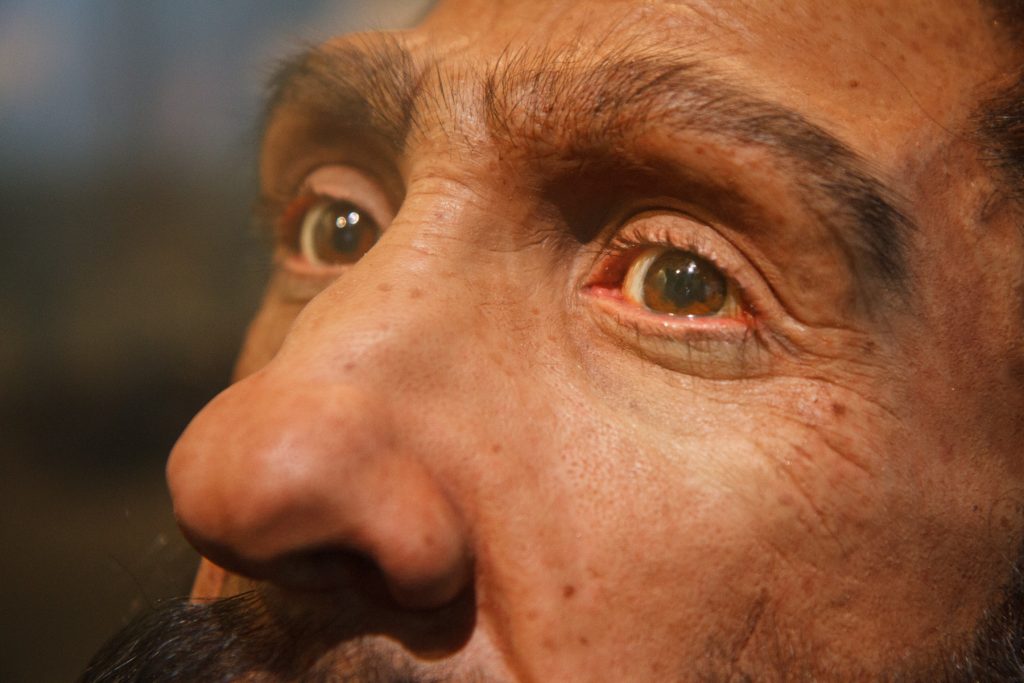I’ve Got the Neanderthal Blues

I have pale skin, red hair, and freckles; my skin shows signs of permanent sun damage even though I’m not yet 40; I’ve had bouts of depression; I used to smoke. So basically, I’m a Neanderthal.
Okay, so that’s an oversimplification. But a new study published today in Science suggests that Neanderthal DNA could have influenced my biology to a surprising degree.
When humans left Africa, they ran into some Neanderthal cousins already living in Eurasia. And between 50,000–60,000 years ago, the two hominins interbred. As a result, most people of European and Asian descent can trace about 1.5 percent of their DNA back to Neanderthal ancestors.
How this inheritance shapes our human DNA has been a hot topic for geneticists for several years now. Research hints that a lot of Neanderthal DNA was maladaptive for us, and that natural selection has weeded many sequences out of the human genome. The reason we (Homo sapiens) ditched so much of it may simply be that Neanderthals were a small population with significant levels of inbreeding, which tends to lead to a buildup of harmful mutations.
Meanwhile, geneticists have gone looking for physical effects of the Neanderthal DNA that is still lingering in our genomes. Links have been found, but the work is difficult. In part, that’s because a wide array of Neanderthal-derived DNA sequences are floating around in the population, but for each individual, there’s just not a lot there: Neanderthal DNA is only a small percentage of our total genome. “Many of these variants are very rare, present in two percent of non-Africans,” says computational geneticist Sriram Sankararaman at the University of California, Los Angeles. “So you need to look at tens of thousands of people to find connections between those sequences and traits.”
Those kinds of sample sizes are finally within reach now that there’s been an increase in the collection of patient’s genetic information as well as a greater use of electronic health records. In the new study, a team led by John Capra of the Vanderbilt Genetics Institute in Nashville, Tennessee, publishes an analysis of the records and genomes of more than 28,000 adults of European ancestry that links their Neanderthal DNA variants to clinical traits and diseases listed in their anonymized files.
The researchers weren’t too surprised to see that Neanderthal DNA influences the risk of developing actinic keratosis, crusty skin patches triggered by sun exposure. Neanderthal adaptations in skin and hair cells to lower light levels in the north are hypothesized to have been actively selected for in humans, so it makes sense that Neanderthal DNA should be tied to related conditions. (Though all that buzz about red hair being caused by Neanderthal genes might be a bit premature, alas. The variant linked to red hair in modern people and thought to come from our cousins is not found in the most complete Neanderthal genome.)
More intriguing is the link between Neanderthal DNA and depression risk, smoking addiction, and other psychiatric and cognitive traits. But don’t expect your doctor to run “Neanderthal screens” any time soon; the finding isn’t particularly useful to contemporary medicine. Neanderthal sequences only explained 2 percent of a person’s risk of developing depression, and some other Neanderthal sequences reduced depression risk. But the study does hint that humans and Neanderthals had significant differences in their brains’ structure or function.
“You can totally imagine that culturally these two populations were different,” says Sankararaman, who has done extensive work on Neanderthal DNA but was not involved in the newest study. And this raises the fascinating question of how these different cognitive traits influenced Eurasians when they mixed with Neanderthals. “We don’t really know how it affected human cognitive function or how our culture changed,” says geneticist Rasmus Nielsen, who is based at the University of California, Berkeley, and was unaffiliated with the new study.
Nielsen says we may never know how that collision of cognitive cultures played out—that our environment and the one that the first human–Neanderthal hybrids lived in are just too different and cognitive traits like mood just too complex to parse. The sequences that increase the risk for depression in modern humans may have had totally different effects in a Neanderthal 50,000 years ago.
But as genomes and health records become increasingly available to researchers, the more subtle effects of our dalliance with another lineage are likely to be uncovered. Maybe someday I’ll be able to pick through my own genome to find out which of my traits I can blame—or thank—my Neanderthal ancestors for. Depression is not so fun. But I do love my freckles.

























